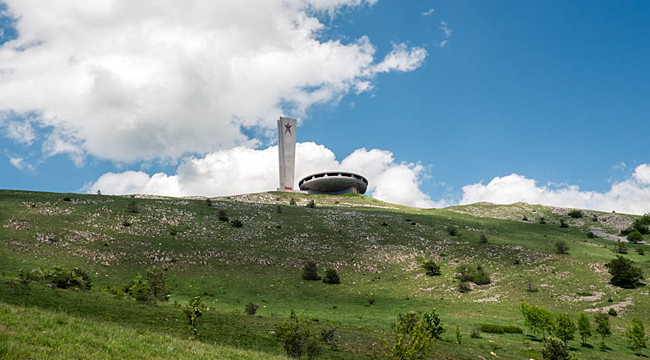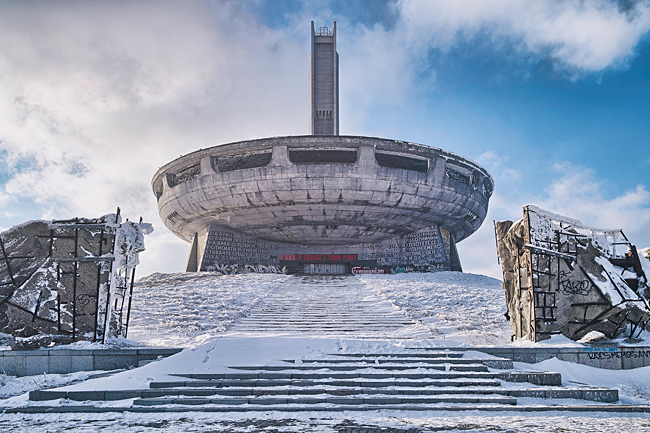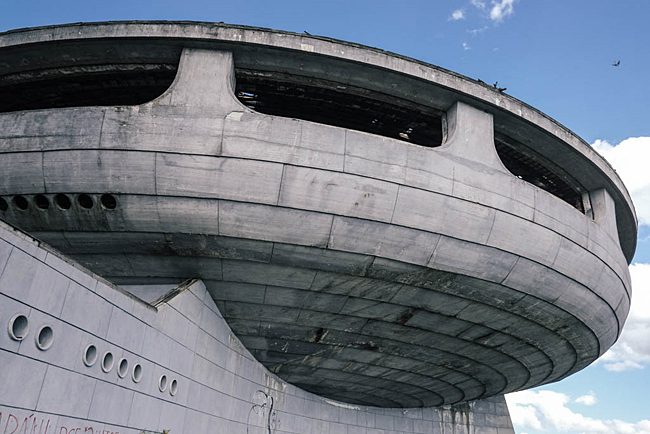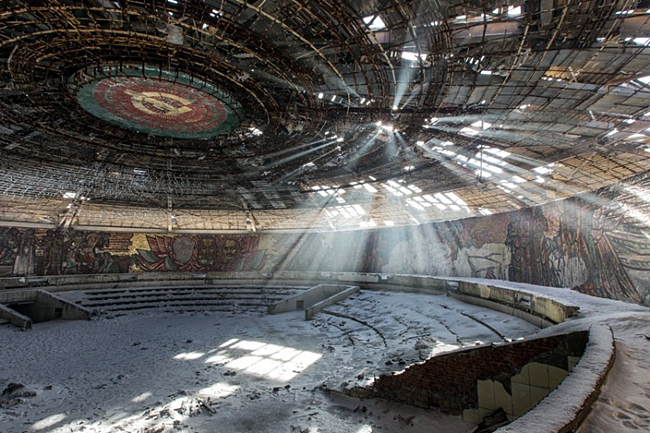
Buzludža, the peak of communist architecture, still fascinates
 |
Sofia - It is a flying saucer made of concrete situated on top of a mountain: the communist structure Buzludzha, which is associated with the hated regime in Bulgaria, fascinates tourists and Western experts who want to save this object, writes the AFP agency.
The gigantic circular space, which could previously accommodate 400 visitors at once, was opened in 1981 as a symbol of triumphant socialism. It still hovers above its pedestal at an altitude of over 1400 meters above sea level in the mountains of central Bulgaria. Nothing was deemed good enough for this construction. Marble and copper were used as cladding on 75,000 tons of concrete, and steel and glass complemented this architectural wonder, which has an average diameter of about 60 meters and whose red star could be observed as far away as Romania or Greece in good visibility.
 |
However, the time of glory was short. After the fall of the communist regime in 1989, the building was abandoned and today it is overgrown with weeds. Methodically, it was also stripped of its precious decorations. The flying saucer, long known only to some tourists attracted by the peculiarities of the place and the remnants of communist slogans on the walls, has now begun to interest international experts engaged in cultural heritage preservation.
"With its brutalist style, it is truly an architectural gem of the 20th century. This monument is absolutely unique in its dimensions and its power," emphasizes Laurent Levi-Strauss, former deputy director of the cultural heritage protection sector at UNESCO. |
According to British architect Graham Bell, it is "incredibly impressive, but also incredibly sad building that is falling apart." The NGO Europa Nostra, whose experts recently visited the site, has included Buzludzha among the seven most endangered sites in Europe. "It is part of European cultural heritage, but Europe hardly knows of its existence," says Bell. According to Europa Nostra, the building can still be partially saved, primarily through European funds. Engineer Mario Aymerich from the European Investment Bank expressed his enthusiasm and emphasized the innovative solutions once used in the construction of the building's dome.
 |
This international interest is welcomed by some Bulgarian advocates for the preservation of the monument, including its designer Georgi Stoilov. "It is good that Europe is interested, because Bulgaria is not interested at all," says the eighty-nine-year-old architect.
Buzludzha has never been a priority for the Bulgarian government, which has imposed an austerity regime since the 1990s and is reluctant to invest resources in an isolated and sadly infamous building. Interest in Buzludzha was revived only by young architect Dora Ivanova, who has been trying for four years to convince experts that "it is not possible to leave such a unique and impressive architectural work in such a state." "It is not about restoring the building to celebrate communism, but about preserving it as a testimony to the history of Bulgaria," she adds. Levi-Strauss also believes that the building could be used for educational purposes, for conferences and concerts.
Buzludzha was built to commemorate the 90th anniversary of the founding of the Bulgarian Socialist Party. Today, this building remains "the flagship of totalitarian architecture of the 20th century in Europe," declares Rumen Draganov, director of the Bulgarian Institute for Tourism Analysis.
The English translation is powered by AI tool. Switch to Czech to view the original text source.
0 comments
add comment











